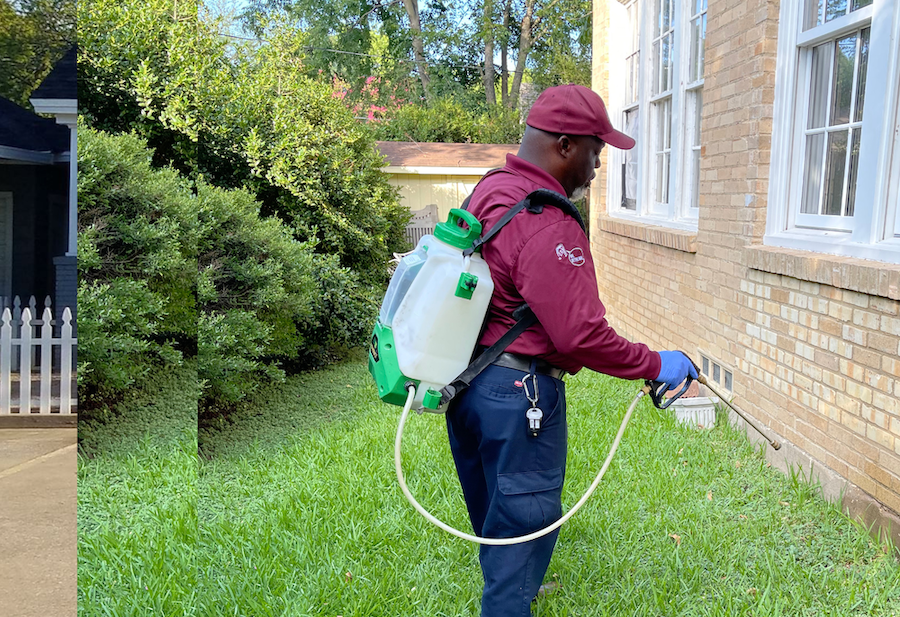Reliable Pest Control to remove pests, mice, and termites fast.
Eco-Friendly Insect Control Approaches for Handling Wildlife in Urban Locations
Urban areas often discover themselves at the intersection of human task and wild animals, leading to one-of-a-kind challenges in bug administration. Green strategies stress sustainable conjunction, employing techniques such as habitat modification and all-natural repellents to mitigate human-wildlife conflicts. These methods not just shield the atmosphere yet additionally enhance area interaction in wildlife administration. As metropolitan populations proceed to expand, recognizing the dynamics of wildlife interactions ends up being progressively critical. What cutting-edge techniques can be implemented to make certain both environmental balance and metropolitan safety? Discovering this question exposes an engaging landscape of prospective solutions.
Recognizing Urban Wildlife Characteristics
Comprehending Urban Wildlife Dynamics is crucial for creating effective and environment-friendly parasite control strategies. Urban areas are increasingly ending up being habitats for various wildlife species, driven by factors such as environment fragmentation, food availability, and human advancement. Identifying these characteristics allows for a nuanced approach to pest administration that aligns with eco-friendly concepts.
Urban wildlife usually consists of varieties such as raccoons, squirrels, and birds, which adjust to city environments, locating niches in green areas, parks, and even suburbs. Their existence can cause disputes with humans, specifically when they manipulate human resources for food and shelter. Comprehending the actions and eco-friendly duties of these types informs techniques that lessen unfavorable communications while promoting biodiversity.
Additionally, acknowledging the interdependencies within urban ecosystems helps in determining essential locations for habitat conservation and restoration. This expertise contributes to the growth of integrated bug administration (IPM) techniques that consider the environmental balance, thereby minimizing reliance on unsafe chemicals. By cultivating coexistence in between humans and city wild animals, cities can develop much healthier atmospheres that profit both citizens and neighborhood communities, leading the way for lasting metropolitan living.
All-natural Repellents and Deterrents
All-natural repellents and deterrents provide a sustainable choice to conventional pest control approaches by using the power of nature to maintain undesirable species at bay. These eco-friendly remedies typically use plant-based active ingredients, vital oils, and other naturally occurring materials that hinder parasites without hurting the environment.
One reliable all-natural repellent is peppermint oil, which is understood to drive away rats and bugs. Its strong aroma is undesirable to many bugs, making it a prominent selection for city settings. Vinegar and citrus peels can serve as deterrents, as their solid smells are typically unappealing to numerous wildlife.
Additionally, diatomaceous earth is an all-natural powder that can be spread in areas susceptible to bug task, efficiently dehydrating and discouraging bugs without posing risks to non-target varieties. Garlic sprays and neem oil are recognized for their ability to repel a wide array of pests, consisting of both insects and larger wild animals.
Applying these natural repellents not only minimizes dependence on chemical pesticides but additionally advertises a healthier metropolitan environment, fostering an extra well balanced coexistence between people and wildlife. By utilizing these strategies, metropolitan locations can efficiently take care of pest populaces while minimizing environmental impact.
Habitat Adjustment Strategies
Effective environment modification strategies play a vital duty in lasting insect monitoring by modifying the atmosphere to make it less for pest problems. By understanding the environmental dynamics of metropolitan locations, homeowner can carry out critical modifications that deter insects while promoting biodiversity.
(Pest Control Services)One main method entails keeping proper sanitation. This includes normal waste elimination, safeguarding trash can, and eliminating standing water to decrease breeding sites for bugs and rats. In addition, landscaping methods such as choosing indigenous plants can improve eco-friendly equilibrium, offering habitats for useful microorganisms while reducing sources for parasites.
Another important strategy is to seal entrance factors in structures. Inspecting and fixing splits in structures, walls, and windows can dramatically minimize insect access. In addition, producing physical barriers, such as fencings or plant buffers, can inhibit wild animals motion right into human-inhabited areas.
Integrated Parasite Administration Practices
Building upon habitat alteration methods, incorporated parasite management (IPM) practices supply an all natural method to regulating bug populations while minimizing ecological effect. IPM incorporates various approaches, consisting of organic, social, mechanical, and chemical controls, to achieve efficient bug monitoring.
Organic control involves the intro of all-natural predators or bloodsuckers to decrease bug populaces. Cultural methods, such as plant rotation and hygiene, interrupt pest life process and diminish their habitats - Pest control service. Mechanical controls, like catches and barriers, offer instant remedy for pest pressures without chemical treatment
Chemical controls are made use of as a last hope, concentrating on targeted applications that restrict injury to non-target varieties and the environment. The selection of ecologically friendly chemicals, when necessary, is indispensable to the IPM structure. Additionally, checking insect populaces and analyzing possible damage helps inform decision-making, guaranteeing that interventions are timely and effective.
Neighborhood Involvement and Education

(Ant control Port Charlotte)Workshops and informational sessions can gear up locals with understanding about native species, environment preservation, and efficient safe insect administration techniques. Collaboration with colleges, local companies, and federal government firms additionally improves academic outreach, making sure that vital info reaches diverse audiences.
Moreover, community-led campaigns, such as area clean-up days and environment reconstruction tasks, not just advertise biodiversity however additionally reinforce neighborhood connections. Pest control service. By motivating residents to share their experiences and observations, communities can develop targeted methods that attend to certain regional insect issues
Including feedback from homeowners into pest monitoring prepares enables an extra receptive and adaptive method to wild animals difficulties. Ultimately, educated and involved areas are crucial to accomplishing lasting success in green pest control, causing much healthier city settings that respect both human and ecological needs.

Verdict
In final thought, environment-friendly insect control approaches deal lasting services for managing city wildlife. By prioritizing This Site environment adjustment, utilizing all-natural repellents, and carrying out integrated pest monitoring methods, communities can foster an unified coexistence with neighborhood fauna.